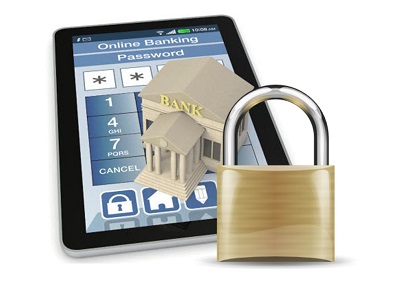Trojans and other threats continue to be a serious concern when it comes to money matters over cell phones.
Kaspersky Lab, the online and mobile security company, has now released its most recent quarterly report on its analysis of the evolution of threats that consumers were facing during the third quarter of 2015.
The analysis involved the detection of more than 300,000 new mobile malware programs.
That considerable figure represented an increase of 10.8 percent over the number of threatening mobile security programs that were detected in the second quarter. The primary technique that was used in order to profit from the mobile threats was the display of intrusive ads to consumers on their smartphones and tablets. Adware has seen a growing trend over the mobile channel and in this most recent report, it represented over half of all threats that were detected for these devices during the third quarter.
The report also described the different types of mobile security attack methods most commonly used.
 For instance, some types of mobile cyber attack involve the use of super-user privileges (that is, root access) in order to hide the fact that they are present within the systems folder. This makes them much tougher to spot and overcome. At the same time, the report noted that the number of SMS Trojans have been falling. In fact, during the third quarter, they made up only 6.2 percent of the threats that were detected.
For instance, some types of mobile cyber attack involve the use of super-user privileges (that is, root access) in order to hide the fact that they are present within the systems folder. This makes them much tougher to spot and overcome. At the same time, the report noted that the number of SMS Trojans have been falling. In fact, during the third quarter, they made up only 6.2 percent of the threats that were detected.
Though mobile banking threats had seen somewhat of a reduction, they remain a serious concern. During the second quarter, there had been 5.9 million notifications, whereas the third quarter saw 5.68 million notifications. The decrease was definitely there, but at the same time, it was not great enough to be able to say that the problem is any less serious.
Kaspersky Lab Solutions reported blocking nearly 636,000 attempts to launch types of mobile security threats such as malware that would be able to steal money by way of the device user’s online banking. That figure was 17.2 percent smaller than it had been the quarter beforehand. Mobile banking Trojans were most likely to occur in Austria.
According to a new report, the large financial institutions are falling behind with the latest tech.
Despite the fact that mobile banking and payments are right at our doorstep and are being used at an increasing rate, in Canada, almost half of all banking execs don’t believe that they have the IT systems, infrastructure, and processes in place to be able to meet present – let alone future – customer needs and expectations over their smartphones.
The report was entitled “Banks: Customers Expect That You’re Always On and Available, Are You Ready?”
The report was made by CenturyLink and it pointed out that even some of the central services still require better IT. It pointed out that when it come to mobile banking and technology, about 40 percent of C-level financial execs who were surveyed didn’t feel that the IT infrastructure was in place for meeting the basic banking service needs to the level of customer expectations. CenturyLink’s managing director of financial services, Roji Oommen, said that “To stay competitive in a technology-driven marketplace, Canadian banks must be both financial institutions and mobile technology innovators.”
While mobile banking may not yet be keeping up with technology, it’s not that the resources aren’t out there.
 The hope that CenturyLink certainly has from the insight in this report is that the banks will see that it and companies like it area already offering the types of services that will help those financial institutions to get themselves on the right path. These strategic technology partners do actually have the potential to spot the mobile tech solutions that are needed and to help in their integration – if not implement them on behalf of those Canadian banks.
The hope that CenturyLink certainly has from the insight in this report is that the banks will see that it and companies like it area already offering the types of services that will help those financial institutions to get themselves on the right path. These strategic technology partners do actually have the potential to spot the mobile tech solutions that are needed and to help in their integration – if not implement them on behalf of those Canadian banks.
The report also determined that 78 percent of banking execs in the country felt that customer demand for improved mobile banking and technology based services would cause them to be required to do more outsourcing. It stated that when those execs were asked about what parts of their IT are currently being outsourced, 86 percent said that they did so for IT infrastructure requirements, while another 72 percent said that they were outsourcing for their IT security.
 For instance, some types of mobile cyber attack involve the use of super-user privileges (that is, root access) in order to hide the fact that they are present within the systems folder. This makes them much tougher to spot and overcome. At the same time, the report noted that the number of SMS Trojans have been falling. In fact, during the third quarter, they made up only 6.2 percent of the threats that were detected.
For instance, some types of mobile cyber attack involve the use of super-user privileges (that is, root access) in order to hide the fact that they are present within the systems folder. This makes them much tougher to spot and overcome. At the same time, the report noted that the number of SMS Trojans have been falling. In fact, during the third quarter, they made up only 6.2 percent of the threats that were detected.
 The hope that CenturyLink certainly has from the insight in this report is that the banks will see that it and companies like it area already offering the types of services that will help those financial institutions to get themselves on the right path. These strategic technology partners do actually have the potential to spot the mobile tech solutions that are needed and to help in their integration – if not implement them on behalf of those Canadian banks.
The hope that CenturyLink certainly has from the insight in this report is that the banks will see that it and companies like it area already offering the types of services that will help those financial institutions to get themselves on the right path. These strategic technology partners do actually have the potential to spot the mobile tech solutions that are needed and to help in their integration – if not implement them on behalf of those Canadian banks.